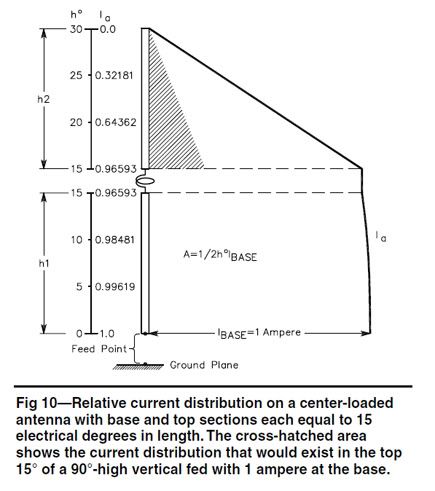Basically the idea of a capacitance hat is to make up the length needed for resonance while limiting the vertical height. It can be a disc or wires, mesh etc anything that will add capacitance to the antenna.
To reduce Q in an antenna system, we can either improve the ground properties or add a capacitance hat above the coil. It will act like a big capacitor in lowering the resonant frequency of the antenna
Starting simple - a vertical antenna is in reality a simple series R-L-C resonant circuit. The vertical wire, rod, or tube is the inductor, L. The same vertical mast, in combination with the radials, forms the capacitor, C. Completing the circuit is the antenna radiation resistance Ra. Antenna radiation resistance varies with the length of the antenna. It shrinks as antenna length shrinks.
*******************************************
Big Bully Comp antenna
Mr. Coily Sales Pitch Version from his website
The "Original"
Audio Ball top hat!!
"""Dictionary Version"""
Capacitance hat - This is a device sometimes found at the end of an element. It can be a cross, a disk, a ball, a loop, or just about anything conductive. It makes the element behave as if it is longer, maybe 10%-30% longer than it really is.
It can save space with Gains in performance! It must Be Correctly designed,spaced,and it is extremely important that the top hat wires be symmetrical around or across the connection point.
*********************************************************************
Here is the web site Mr coily gleaned his information from and he conviently added his spin on it, and he is calling it a dictionary definition? It is a HD TV web Page that he added
Glossary A to F
"Capacitance hat - This is a device sometimes found at the end of an element. It can be a cross, a disk, a ball, a loop, or just about anything conductive. It makes the element behave as if it is longer, maybe 10%-30% longer than it really is.
It can save space with almost no drop in performance. Capacitive hats are uncommon in TV antennas. (The Channel Master 3671B has six capacitive hats.)
*************************************************************
Contrary to belief a Top Hat/Cap Hat does nothing for the Audio. The term Audio Ball came from guys who run alot of power which can create a Plasma at the end of the antenna from the sharp edge. You would be able to hear a persons voice. Putting a round ball on the end will eliminate a plasma from forming.
"When buying a antenna don't beleive this hype"

